20+ SAMPLE Printable Notice
-
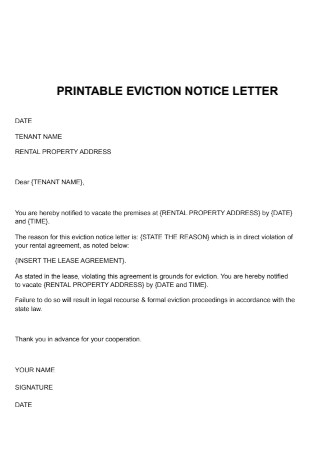
Printable Eviction Notice Letter
download now -
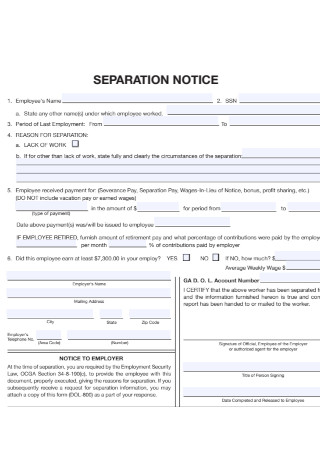
Separation Notice
download now -
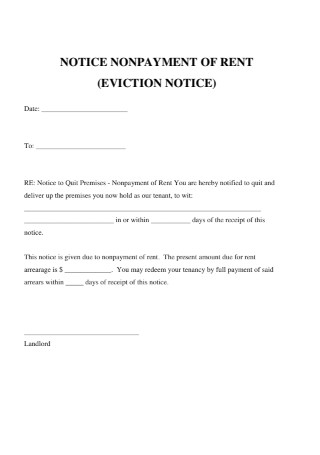
Nonpayment of Rent Notice
download now -

Notice to Quit Possession
download now -

Notice to Employee
download now -
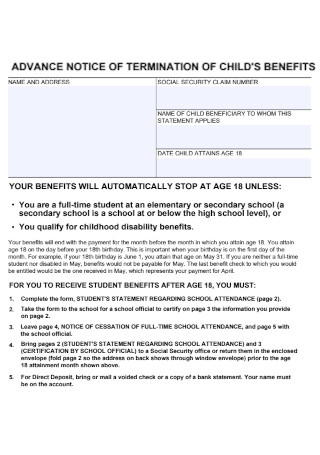
Advance Notice of Termination of Child’s Benefits
download now -

Notice Of Repossession Of A Motor Vehicle Or Motorcycle
download now -

Notice of Sale and Bill of Sale for a Motor Vehicle
download now -
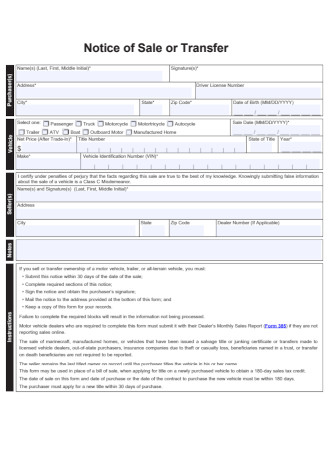
Notice of Sale or Transfer
download now -

Notice of Medicare Non Coverage
download now -
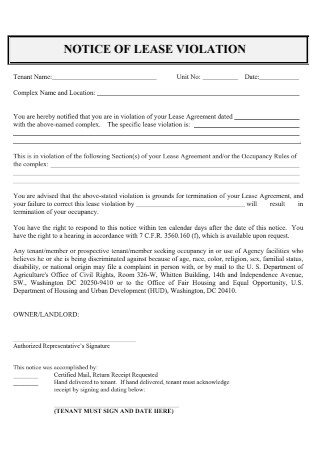
Notice of Lease Violation
download now -
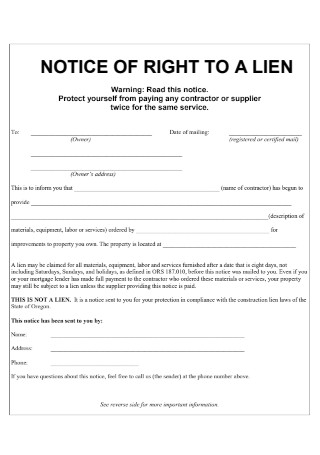
Notice of Right to a Lien
download now -
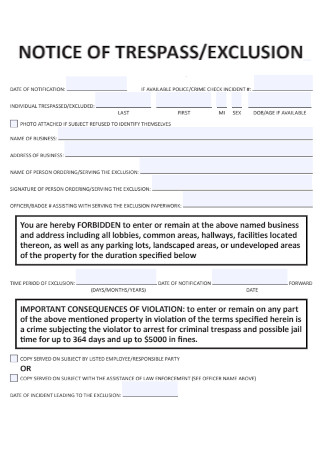
Notice of Trespass & Exclusion
download now -
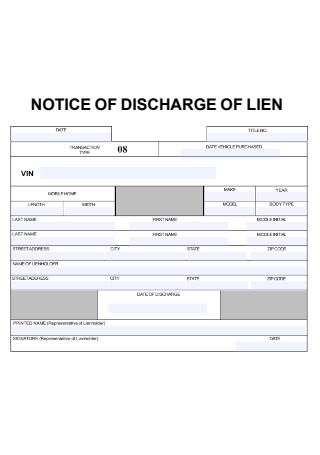
Notice of Discharge of Lien
download now -
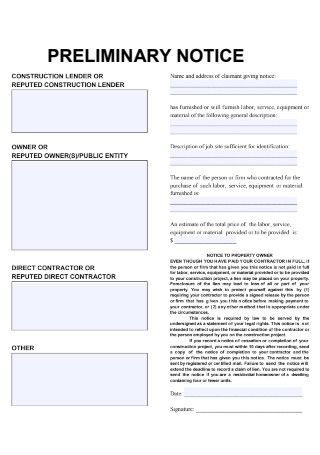
Preliminary Notice Form
download now -
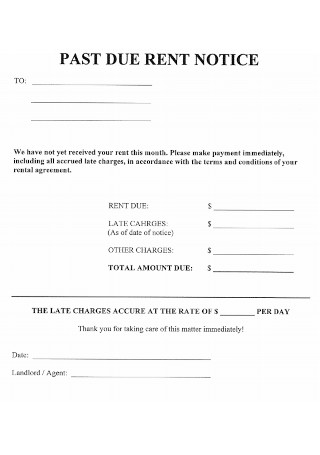
Past Due Rent Notice
download now -

Sold Notice
download now -
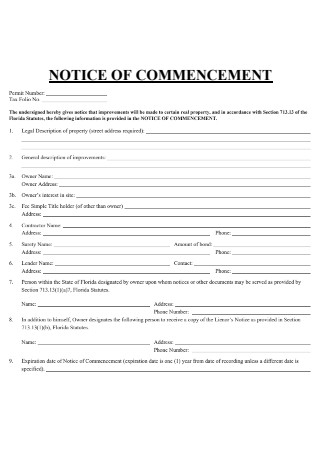
Notice of Commencement
download now -
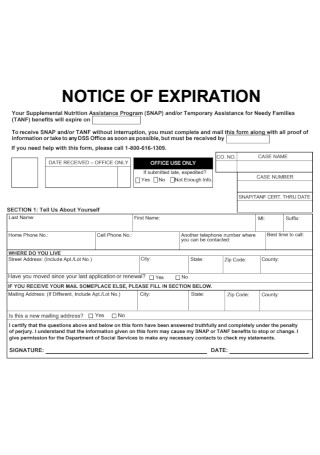
Notice of Expiration
download now -
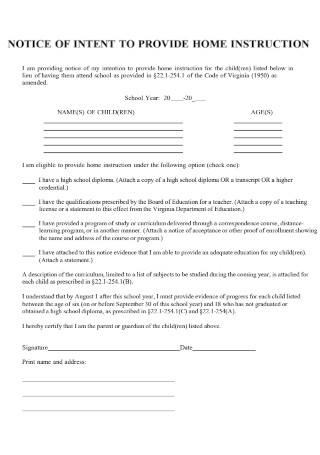
Notice of Intent to Provide Home Instruction
download now -
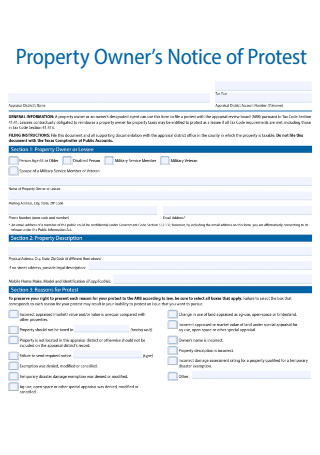
Property Owners Notice of Protest
download now
What Is a Notice?
A notice is a formal announcement or warning that can either be privately issued or publicly displayed. The purpose or aim of a formal notice is to inform an individual and/or the general public regarding a particular matter.
According to an article by Find Law, a legal assistance website, there are eviction notices for cause and also without cause. With the former, it can be further classified into three basic types of eviction notices. These are pay rent notices, cure or quit notices and unconditional quit notices.
Examples of Notices
There are several types of notices. It can be applied in different areas and industries, and each type of notice serves a particular purpose. From the academe to government to the private sector, written notices are used for various occasions and different scenarios. The following are just some common examples of written notices.
Tips for Creating a Notice
In creating a formal written notice, you need to practice both clarity and brevity. Whatever the objective for issuing the notice, make sure that is comprehensible and based on facts. The next time you are tasked to draft any kind of notice, keep in mind these simple but useful tips:
How to Create a Notice
To create a formal written notice, you have to know your purpose for drafting one. And if you are looking for reliable sample templates that you can use as a reference guide, the editable and printable notices above can save you a lot of time and effort. Simply select one that meets your needs and follow the basic steps below.
Step 1: Title and Objective
The first step in crafting a written notice is to provide the title and establish your objective. As discussed in earlier sections, there can be many different types of notices. Each one can serve a different purpose. It is important to be clear about your purpose behind the written notice. If it is merely to announce an important matter, then always try to specify the subject or topic in the title line. This is usually just a phrase or in some instances, the word ‘notice’ itself can serve as a generic title. It is crucial to know what your main objective is for creating the notice. Whether the goal is to reprimand an erring employee or to issue a stern warning to a delinquent tenant, it helps to be clear about your objectives from the start.
Step 2: Formal Announcement
The next step is to formally inform the recipient of why they are receiving the notice. In a way, the declaration can serve as an opening statement. It is vital for your recipient or audience to immediately be informed of the nature of the notice. How much detail you disclose is largely up to you. But ideally, you need to provide all the relevant details in a formal notice. Although it may be brief, the notice should be loaded with information. The recipient has the right to know and to be informed, especially if the notice is particularly critical or berating. Keep this section brief and straight to the point, a couple of lines should do.
Step 3: Conditions
After stating the formal announcement, the next step is to enumerate the various conditions that apply. Note that not all formal notices will contain terms or conditions. But in the case of eviction or past due rent notices, these usually demand conditions or even ultimatums. Most of these are on a case-to-case basis, so the specific conditions will depend on individual circumstances. For example, tenants who receive a notice of past due rent are usually required to settle their accounts by a specific date. These types of conditions are common but often necessary in order to exact accountability and fairness.
Step 4: Authorization
The last step in writing a notice is to reinforce authority. If there is a recipient, then there must also be a sender. If you are tasked to draft the notice, make sure to include the signatory’s name and designation. Leave adequate space at the bottom of the notice for the authority figure to sign. Having an authorization statement helps legitimize the notice and gives it considerable weight. Moreover, you can also utilize this section to invite other concerns or clarifications. Understandably, there will be recipients who will question or raise concerns regarding the notice. Thus, it is important that you also indicate your contact information in case they need to get in touch with you.
FAQs
How do I write a simple notice letter?
To write a basic notice letter, make sure to exercise objectivity and impartiality. Your statements and arguments should be based on fact and evidence. Refer to the previous section for a more detailed instruction guide on how to create a formal notice.
How do I write a notice to my employee?
To write a notice to an employee, indicate the employee’s basic information and state the reasons for the issuance of the notice. If certain terms and conditions apply, be sure to identify and enumerate these clearly.
How do you write an immediate notice?
An immediate notice’s tone should have a sense of urgency. Indicate the specific date, deadline or conditions that apply. For more details, refer to the tutorial guide above on how to craft a notice.
A written notice should be brief, direct and loaded with objective information. Browse the wide selection of printable notices above for more ideas! Choose a template that suits your needs and download a free notice template now!
